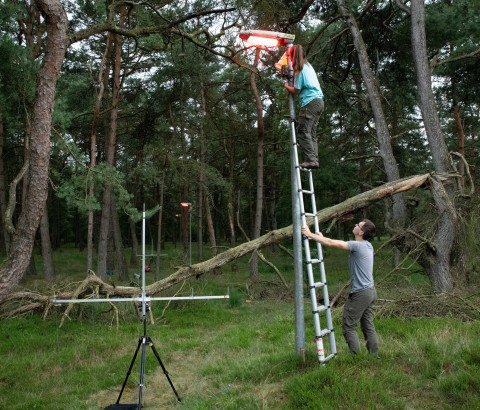Light Pollution
Illumination of forest edges leads to a decrease in moth numbers and changes in the behaviour and success of bigger day as well as night-active animals in the long run. What did we find out at NIOO and what can we do with these results?

©
Kamiel Spoelstra
Articial light at night influences our nature, but it was not clear how large this impact is. Thanks to a unique research set-up we now have proof. Illumination of forest edges leads to a decrease in moth numbers in the long run, and it hampers the behaviour of bigger nocturnal and diurnal animals.
For millions of years, the days were bright and the night were dark. Nowadays, the Netherlands and many other parts of the world are almost completely illuminated, by street lights or the lights of homes and businesses. The animals that are active at night experience almost nowhere true darkness. Humans are also sensitive to this.
Experts
-
Kamiel Spoelstra
Researcher , Animal Ecology
-
Claire Hermans
Postdoc , Animal Ecology
-
Marcel E. Visser
Head of department , Animal Ecology
-
Sander Buddendorf
PhD Candidate , Animal Ecology
-
Gabriel Charvalakis
PhD Candidate , Animal Ecology
Applications
- National light policies
- International lighting advice
- Nature conservation
-
- experimental sites
- 7
-
- lantern posts
- Many
-
- colours of light tested
- 3
Useful links
- Scientific paper - Effects of anthropogenic light on species and ecosystems. Science (2023)
- Scientific paper - Response of bats to light with different spectra: light-shy and agile bat presence is affected by white and green, but not red light. Proceedings of the Royal Society B (2017)
- Scientific paper - Experimental light at night has a negative long-term impact on macro-moth populations. Current Biology (2020)




